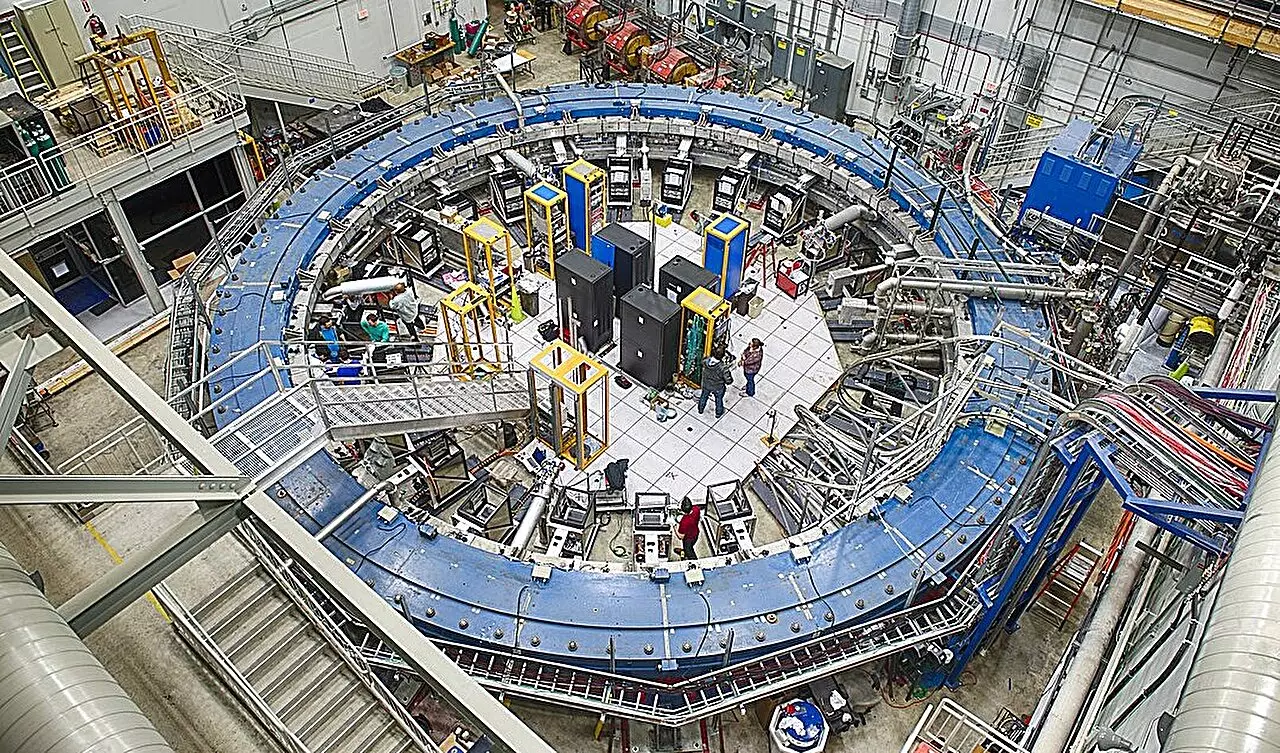Magnetic moment is a fundamental property of particles with spin, influenced by their interaction with magnetic fields. Alongside mass and electric charge, magnetic moment plays a significant role in the world of physics. The muon, a particle similar to the electron, has been at the center of attention due to a curious inconsistency between its theoretical magnetic moment value and experimental measurements.
Theoretical calculations based on the Dirac equation predict that the muon’s magnetic moment, symbolized by the letter ‘g’, should be 2. However, high-precision experiments conducted in particle accelerators have revealed a slightly different value of 2.00116592059, with a minuscule uncertainty range. This minute disparity, referred to as ‘g-2’, has puzzled scientists for decades and offers insights into the interactions involving muons with exotic particles or unknown forces.
Physicist Diogo Boito, from the University of São Paulo, emphasizes the importance of accurately determining the muon’s magnetic moment in advancing particle physics. The discrepancy between experimental and theoretical g-2 values poses a significant obstacle in exploring potential contributions from new particles like Higgs bosons or dark matter. Addressing this issue requires a comprehensive understanding of the muon’s behavior.
Muons, belonging to the lepton family, exhibit rapid decay in the presence of magnetic fields. These decaying muons give rise to a plethora of particles such as electrons, positrons, bosons, and photons. The existence of multiple virtual particles influences the actual magnetic moment detected in experiments, surpassing the predicted theoretical value of 2.
The study of muon g-2 involves two primary methodologies: experimental data analysis and quantum chromodynamics (QCD) simulations. A crucial challenge arises from the disparities between results obtained through these approaches, hindering the exploration of potential exotic particle interactions. Bridging the gap between experimental data and theoretical predictions is essential for advancing our understanding of particle physics.
Boito and his team have developed an innovative approach to reconcile the differences between experimental and simulated results concerning muon g-2. By precisely calculating the contributions of connected Feynman diagrams using lattice QCD simulations, they have identified a major source of discrepancy. This breakthrough sheds light on potential inaccuracies in experimental data, particularly in the estimation of two-pion channel information.
The findings from this research not only clarify existing discrepancies in muon g-2 predictions but also open avenues for further exploration in particle physics. Understanding the intricacies of particle interactions, especially in high-energy contexts, is crucial for unraveling the mysteries of the universe. As researchers delve deeper into the realm of subatomic particles, new insights and discoveries are on the horizon.
The quest to decipher the mystery of the muon’s magnetic moment is a testament to the relentless pursuit of knowledge in the field of particle physics. By bridging the gap between theory and experimentation, scientists are inching closer to unlocking the secrets of the cosmos hidden within the behaviors of these elusive particles.


Leave a Reply